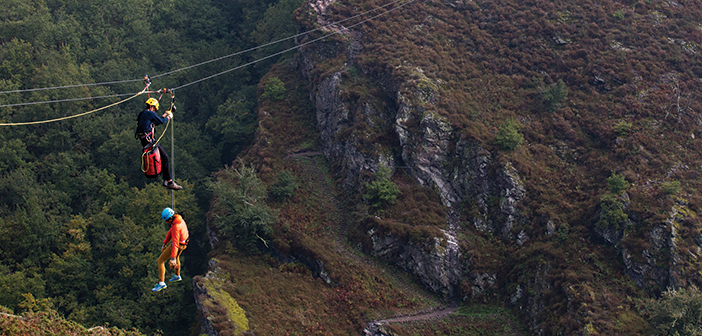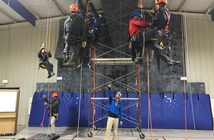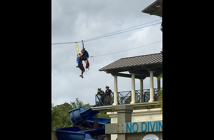As pay-to-play adventure parks and zip lines have become more widespread, the need to plan for rescues and evacuations has grown as well. During the recent evolution of the adventure park industry, rescue and evacuation, while certainly not overlooked, have not been a major point of focus.
In the absence of a standard for rescue and evacuation regarding guests at adventure parks and zip line tours, it’s up to operators to thoroughly analyze their needs, plan to address them, train staff, and house the proper equipment. That discretion, and how well it is exercised, is a big responsibility.
High rope, high angle rescue and evacuation are not entirely new territory, of course. The procedures and gear used in adventure parks, challenge courses, and zip lines are much like other work-at-height situations, such as ski lift evacuation and industrial safety scenarios. Triage—the initial evaluation and assignment of degrees of urgency in an emergency—remains the same for all situations, too. Many in the adventure park and zip tour world are familiar with the concepts.
However, the rescue situations vary tremendously from one park or canopy tour to the next. The length and slope of the line, distance to a tower or platform, height off the ground, and the rescue system or systems in place are all factors that make each situation unique.
In addition, rescue and evacuation operations might be certified through, or fall under the standards or rules of, a number of different organizations: the Society of Professional Rope Access Technicians, the Association for Challenge Course Technology, the Professional Ropes Course Association, the Industrial Rope Access Trade Association, as well as OSHA and ANSI. Operators should check to know what rules or regulations may apply in their jurisdictions.
Many adventure park and zip line operators are not fully aware of the legal requirements to protect and train employees, says Cliff Kirk, president of TES, Inc., a company that trains employees in the use of personal protection equipment while working at height. “It’s not that operators don’t care,” he says. “It’s because they don’t know.”
“We’ve been allowing this to evolve” in the adventure park world, says Jesse Williams, who manages training programs at the Technical Institute for Petzl America. “But at the same time, there are some big underlying principles that are going to guide your rescue.” Williams says it’s a matter of coming up with a system that works on your course based on these general principles.
START WITH A PLAN
As an operator, hoping a rescue or evacuation situation never occurs, or relying on the local emergency rescue team to come do the job for you, is unrealistic. Having a well thought out plan that has been exhaustively practiced comes highly recommended.
“The most common mistake is simply failing to preplan,” says PMI CEO Loui McCurley. “An operator who thinks that training advanced employees to retrieve a stuck guest on a zip line is the same as preparing for rescue is missing the entire point,” he says. “People get stuck on zip lines relatively frequently, but when things happen like midair collisions, medical conditions, injuries, or even accidents involving employees, the response gets a whole lot more complicated.”
Kirk, whose company is a Petzl Technical Partner, notes that OSHA requires operators to have a rescue and evacuation plan for employees, “and it’s pretty specific. If something happens to an employee, OSHA will want to see the rescue plan. And it will be an OSHA investigation, not one done by ACCT or other regulators.”
What to do? Plan ahead, says McCurley. “Preplanning for rescue isn’t rocket science, but it also isn’t something that just happens easily or automatically in the heat of a rescue incident. I would encourage every operator to have a thorough hazard analysis performed for their site, by a third party if necessary, and to develop and train to a simple and thorough rescue plan that covers a range of hazards,” he continues. This will be part of a site’s hazard analysis document, which outlines every hazard that exists and the corresponding plan for dealing with any possible scenario that may occur.
“Employers have a regulatory responsibility to their employees, and arguably a moral/legal responsibility to guests,” McCurley adds. While employees fall under OSHA regulations, which are extensive, guests may well fall under different rules, or no rules at all. But that doesn’t remove the responsibility for those customers.






